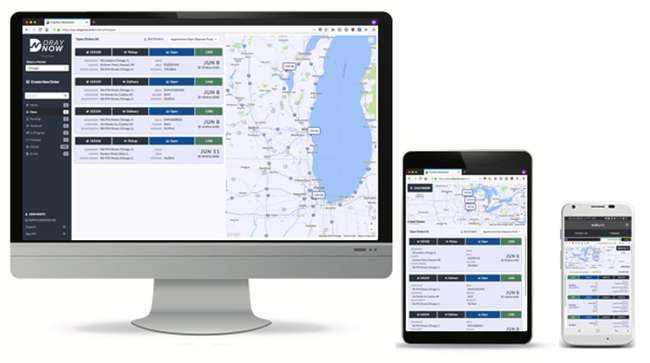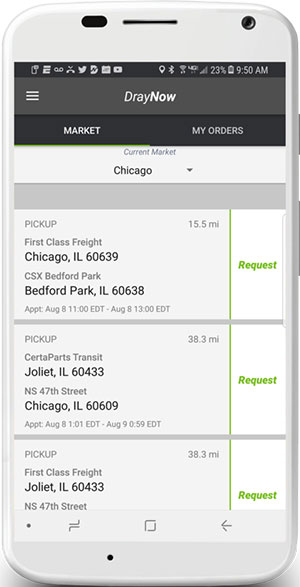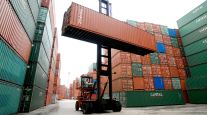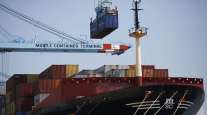DrayNow Raises $5 Million to Expand Services Nationwide

A new load-matching service that is focused on helping shippers and freight brokerage firms find drayage capacity has received $5 million in funding to expand its business nationwide.
The investment by Comcast Ventures and Osage Venture Partners is the latest example of the growing interest among investors and industry executives to tap into technology to make intermodal transportation more efficient.

Albert
DrayNow offers a mobile application that can be used by over-the-road truck drivers to find container loads at ports and rail terminals around the country. The company also can directly dispatch loads and provide status updates for shippers, third-party logistics firms and consignees.
The business was soft-launched in 2017 after a year of development and is an offshoot of TransNoble Logistics, a brokerage firm established in 2011 by a team of veteran intermodal transportation executives that included Brad Frith and Craig Probe.
Mike Albert, a former senior vice president of operations at Kane Is Able Inc. and RoadLink Transportation, joined TransNoble in 2015 and serves as a founder and CEO of DrayNow.

DrayNow
“We’re passionate about removing the friction and manual processes from this niche of transportation that has struggled to innovate,” Albert said in a statement issued Aug. 28. “Every stakeholder within the intermodal supply chain is asking for transparency and status updates in increments previously unimaginable due to our industry’s fragmentation.”
In a subsequent interview with Transport Topics, Albert said the company will use the new funding to expand its load-matching service to 20 or more markets over the next 18 to 20 months. Current operations in Chicago and Atlanta are handling 150 to 175 loads a day, he said.
Albert said it’s important to bring more capacity into the drayage market because the industry has been unable to keep up with surging demand and drivers are leaving the business in greater numbers.
According to Albert, fewer than 5,000 carriers are able to access intermodal freight, but DrayNow could open up the market to as many as 845,000 additional carriers.
Drivers that pick up containers at ports and rail terminals must meet certain insurance requirements and be vetted under terms of the Universal Intermodal Interchange Agreement, a process that is overseen by the International Association of North America, says Jason Hilsenbeck, president of LoadMatch and Drayage.com in Naperville, Ill.
“That gatekeeping aspect is the No. 1 reason why trucking companies don’t get into container drayage business,” Hilsenbeck said, “but it is necessary to control who can get into that business.”
Hilsenbeck said a part of his business is providing a nationwide directory of drayage service providers, but is not involved in arranging for loads.
Cargomatic Inc. is another venture-capital backed company that provides technology to connect shippers and drivers to haul containers and freight in Los Angeles, San Francisco, Seattle, New York, Chicago, Dallas and Houston.
In February, regional railroad operator Genesse & Wyoming Inc. announced an investment in Cargomatic and said it would work with the company to expand its operations in the United States and abroad.
"DrayNow... has completed its Series A funding of $5 million, led by @ComcastVentures and joined by @OsageVP ." https://t.co/pEw0S4BYd6 #intermodal #venturefunding #trucking — DrayNow (@DrayNow) August 28, 2018
Sam Landman, managing director of Comcast Ventures, said the shipping and logistics industry is vital but that the intermodal sector “has seen very little technology enabling the matchmaking and operational efficiency it needs.”
“We invested in DrayNow because the team and the technology establishes a much more efficient method for moving freight,” he explained. “In addition to being the first mover in the space, DrayNow has demonstrated an ability to build and refine an offering that addresses its customers’ pain points.”
Tyler Rushforth, executive director of the Intermodal Motor Carriers Conference of American Trucking Associations, agrees that the impact of technology on intermodal transportation “could be significant,” but other issues, such as having access to proper chassis and alleviating unplanned delays at ports, must also be addressed.
“Technology linking the entire process from the front end to the back end would be incredible helpful,” he said.




